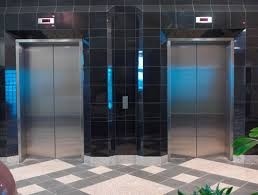Safety Features On Elevators

Elevators serve as a reliable mode of transportation when there are just too many flights of stairs between us and our destination. They are also critical for handicapped and disabled people who cannot make their way up and down stairs comfortably. Elevators are quite secure due to an abundance of safety features that should ensure that riders’ safety needs are met and given number one priority.
There are two different kinds of elevators: traction elevators and hydraulic elevators. Each type of elevator comes with its own standard set of safety features.
Traction elevators feature: (hoisted by strong cables; usually more than 5 stories tall) – Brake system that works with a speed sensor to ensure a safe speed for the cabin – Door sensors that detect movement as not to close on anyone entering or exiting the cabin – Interlocks that control whether or not a cabin can begin ascent or descent – if the doors are not fully closed, the interlocks will stop the cabin from moving – Switches in the elevator shaft detect where the elevator is located in case of emergency – Buffers located in the pit that can protect the cabin and passengers in case of a fall – The emergency evacuation latch, located in the ceiling of most cabins – Almost all elevator cabins have an emergency alarm switch that can be manually operated. This, along with an emergency telephone that directly connects with lobby security or the fire department, gives the passengers control when normal operation ceases.
Hydraulic elevators feature: (ascends and descends on a lift system) – In case of erosion or corroding metals, a safety brake can be installed to support a busted jack underneath the elevator. – The features listed above for traction elevators
There are two different kinds of elevators: traction elevators and hydraulic elevators. Each type of elevator comes with its own standard set of safety features.
Traction elevators feature: (hoisted by strong cables; usually more than 5 stories tall) – Brake system that works with a speed sensor to ensure a safe speed for the cabin – Door sensors that detect movement as not to close on anyone entering or exiting the cabin – Interlocks that control whether or not a cabin can begin ascent or descent – if the doors are not fully closed, the interlocks will stop the cabin from moving – Switches in the elevator shaft detect where the elevator is located in case of emergency – Buffers located in the pit that can protect the cabin and passengers in case of a fall – The emergency evacuation latch, located in the ceiling of most cabins – Almost all elevator cabins have an emergency alarm switch that can be manually operated. This, along with an emergency telephone that directly connects with lobby security or the fire department, gives the passengers control when normal operation ceases.
Hydraulic elevators feature: (ascends and descends on a lift system) – In case of erosion or corroding metals, a safety brake can be installed to support a busted jack underneath the elevator. – The features listed above for traction elevators
- j1f572aeba0c96932676095c8cbf368a02.jpg